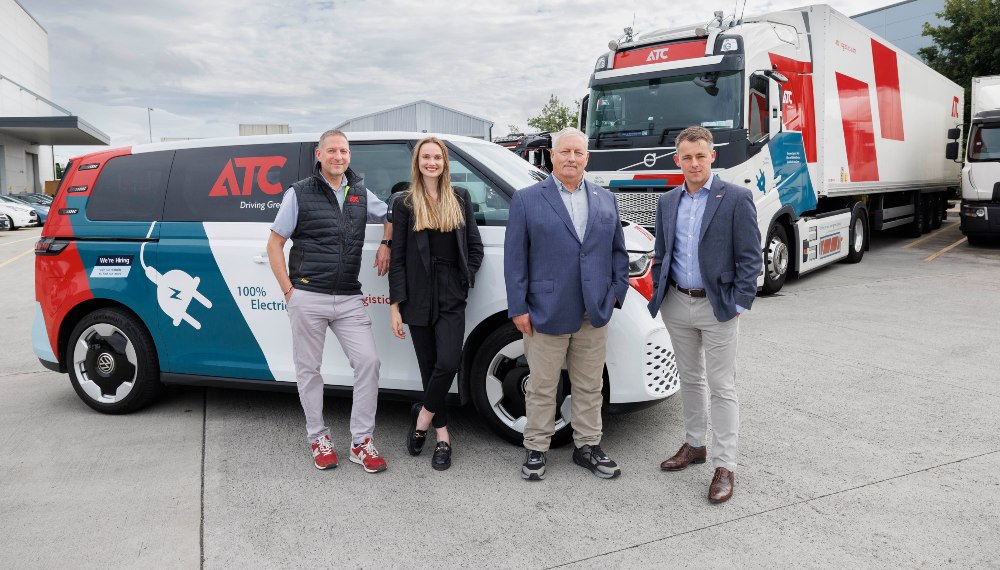Fleet safety used to be primarily viewed as a matter of compliance or ethics. Today, it’s a core financial strategy, writes Oliver Holt from Geotab.
Irish businesses are feeling the squeeze now more than ever before, with inflation biting into their margins. Factors like rising insurance premiums, spiking maintenance costs, and fluctuating fuel prices are creating an additional headache for any company that operates vehicles. Unlike many other costs that a business has to endure, there are proactive measures that fleet owners can take to control their expenditures.
Adopting proactive fleet safety management ensures that businesses can benefit from lower fuel bills, reduced repair costs and minimised risks of spiralling insurance premiums. Far beyond tracking vehicles, modern telematics platforms – like those from Geotab – enable forward-looking insights into driver behaviour, collision risk, and maintenance needs. The potential savings can be the difference between a company thriving and simply surviving.
“‘Cost of Ignoring’ represents the hidden expenses incurred when businesses fail to put fleet safety and efficiency tools in place – costs that silently erode profitability”
Fleet safety used to be primarily viewed as a matter of compliance or ethics. Today, it’s a core financial strategy. Each incident on the road has the potential to lead to not just injury or vehicle damage, but costly downtime, lost contracts, legal exposure, and brand damage. Telematics fleet management technology makes it easier than ever to implement accident reduction strategies, encourage driver safety, and protect the bottom line.
Understanding ROI vs. COI: The cost of ignoring safety
Many fleet managers focus on Return on Investment (ROI), looking at strategic decisions like whether they should switch their fleet to EVs, long-term gains that can be made by investing wisely. But there’s another equally important metric – the Cost of Ignoring (COI). COI represents the hidden expenses incurred when businesses fail to put fleet safety and efficiency tools in place – costs that silently erode profitability.
For example, ignoring speeding and harsh braking might save you time on the road today, but it can increase the risk of an accident, accelerate vehicle wear, and drive up fuel consumption. Over time, these behaviours compound into thousands of euros in losses – none of which may appear on a financial balance sheet.
Our analysis shows that COI can be substantial, particularly in areas like safety, fuel, maintenance, and productivity. By leveraging telematics fully, companies can pinpoint where safety interventions yield the most impact. Geotab’s Fleet Savings Summary Report gives decision-makers the tools they need to quantify existing and potential savings per vehicle – turning safety into a measurable business win.
The real-world impact: Lowering costs and increasing uptime
At a time when inflation is pushing insurance costs higher, taking proactive measures to avoid collisions and improve driver safety overall is more important than ever. According to insurer reports, fleets using telematics see up to a 45% reduction in accidents.
Despite this, fleet safety is often approached reactively – responding to incidents after they happen. Our experience shows that companies employing solutions such as predictive analytics, driver-safety scorecards (e.g. speeding, harsh braking, seat-belt use), near real-time alerts, and gamification go the extra mile to avoid the financial and human toll of road traffic accidents.
Consider the case of Circet, a leading provider of telecommunications network services in Ireland. They have used telematics to benchmark performance, identify high-risk driver behaviours, and enhance their safety culture with data-driven coaching. The result? A significant improvement in driver safety scores and a measurable reduction in CO2 emissions across their Irish fleet.
The lesson is simple: investing in the right technology is not just about avoiding fines or ticking boxes – it’s about gaining a business edge through greater resilience and performance.
Telematics: The enabler of safety‑driven savings
A telematics platform delivers more than just location tracking – it captures actionable vehicle and driver data via telematic control units (TCUs). These devices monitor critical metrics like speed, idling, engine fault codes, fuel consumption, route adherence, and much more, providing near real-time data and historical insights.
The true value lies in how that data is used. Through fleet safety scores, benchmarking against peers, and driver coaching tools, telematics helps SMEs identify risky behaviours and target interventions. For example, if a driver consistently speeds or brakes aggressively, they can be flagged for coaching before their habits result in an accident.
At the same time, companies immediately benefit from lower fuel costs and avoiding excessive wear and tear. Telematics also helps identify inefficient routes, underutilised vehicles, and maintenance issues before they become expensive breakdowns. It’s like having a virtual fleet manager in every vehicle.
Practical steps for companies to act now
- You can’t track success without measurement: Start by analysing your fleet’s current performance across safety, fuel, maintenance, and productivity. Telematics platform make this easy through automated reporting.
- Identify high‑impact interventions: Use safety scorecards to spot drivers at elevated risk levels, through factors like excessive harsh braking, speeding, or seat‑belt non‑compliance – and focus coaching efforts there.
- Monitor and coach proactively: Leverage near real‑time alerts and gamification (leaderboards, rewards) to reinforce safe driving habits before costly incidents occur. By turning driving performance into a shared goal, companies can build a culture of accountability and pride.
- Benchmark and improve over time: Compare your fleet’s metrics against relevant benchmarks and track improvements month on month to ensure sustained gains in safety and cost savings.
- Reinvest in safety and resilience: Use cost savings from fewer repairs and claims to invest in better training, newer vehicles, or advanced driver assistance systems (ADAS). The more you reinvest, the greater your returns become.
Inflation may be raising the cost of maintaining a fleet, but it also sharpens the incentive to act smarter. For Irish businesses, proactive fleet safety through telematics isn’t an added expense – it’s a strategic investment that reduces collision risk, fuel costs, and maintenance overheads, while enabling more efficient, predictable operations.
Crucially, it allows SMEs to operate with greater confidence and flexibility. In uncertain times, stability becomes a competitive advantage. Through understanding both ROI and COI, businesses can move beyond firefighting toward long-term fleet optimisation.
Companies can transform fleet safety from a cost centre into a competitive advantage, by moving from reactive to proactive. For businesses trying to stretch every euro, that shift isn’t a “nice to do” – it’s a “must do.”
-
Bank of Ireland is welcoming new customers every day – funding investments, working capital and expansions across multiple sectors. To learn more, click here
-
For support in challenging times, click here
-
Listen to the ThinkBusiness Podcast for business insights and inspiration. All episodes are here. You can also listen to the Podcast on:
-
Spotify
-
SoundCloud
-
Apple





